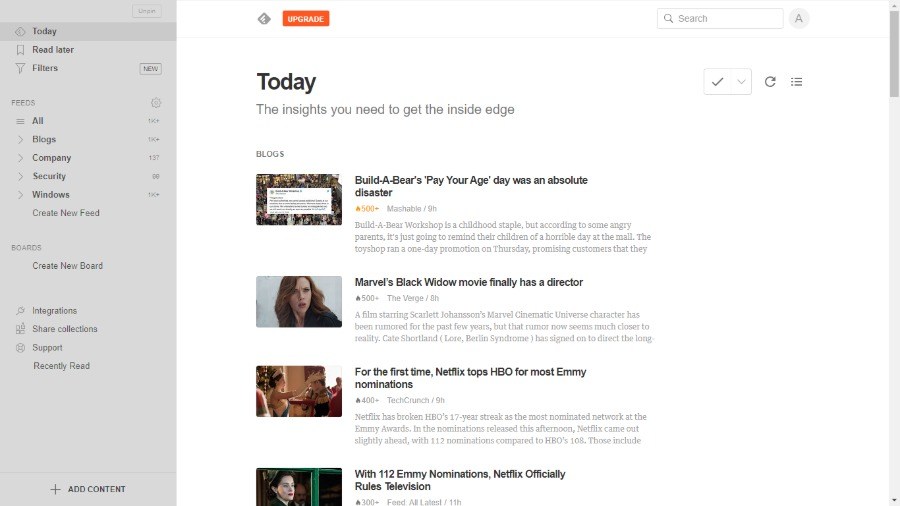
RSS has been designed to strip down articles from all the frills to ensure optimal readability – fine in theory, a bit cumbersome in practice. For all its usefulness, there are some drawbacks for both end-users and site owners. Cons of using RSSĪs with most things in life… you can’t have it all. With a lot less time and mental energy devoted to online distraction, you gain a bit of your valuable focus back and increase the quality of your work. RSS structures not just your reading, but your daily routine. The less time you spend on your browser, hopping around open tabs, the more time you actually have to do your job. It’s easy to migrate your subscriptions to an RSS and only leave important work-related emails without having to dig around under a mountain of newsletters.Īlso read: Top 10 Job Search Websites of 2021 5.
#Best rss feed reader full#
Rather than commit to a full cull, RSS steps in to house your newsletter subscriptions. The quest for inbox zero has been greatly emphasized in productivity circles and one way to achieve it is to remove email subscriptions altogether. The sight of an empty inbox can transport a person to nirvana instantly. RSS leaves you to decide when you want to get into your subscriptions – no spam! 4. Add more than one newsletter and you’re getting notifications about new mail, which are nothing more than spam. It’s because emails are hardly the most convenient format. Subscribing to a newsletter means daily interruptions by emails you’re unlikely to open in the first place even though you willingly subscribed to a site’s mailing list. What’re more websites with heavy publication schedules across many topics have themed feeds. RSS readers reduce all this to a single dashboard. You save precious seconds from checking each site individually and then scrolling through the front page. It takes some time to set up and add all your subscriptions, but then you’re done. It’s also a much less stressful way to consume news. That depends on what news sources you wish to follow, but the opportunity is there. Follow breaking stories as they develop across multiple sites for an unbiased view, where all viewpoints are fully represented. The main selling point is that you have all the information channels in one place. The main takeaway is that RSS makes content consumption easy! 1. It’s a user-friendly tool with a lot of applications for professionals and casual users as well. RSS readers come in handy when you’re gathering information on campaigns and competitors, structuring research, and monitoring your brand.Īlso read: 10 Business-Critical Digital Marketing Trends For 2021 Pros of using RSS The current crop of RSS readers has numerous features and integrations with other platforms to enable you quite the breadth of tasks. There’s no right or wrong way to use RSS. Each new post would be added to the feed and when an RSS feed reader crawled the feed, it would syndicate the post to its dashboard where the user would read it instead of going to the site itself. How does it work? A site would have all updates added in a feed, which is coded in an XML file. The little protocol that could and changed the world. All this is thanks to Really Simple Syndication. Think of it as the blueprint for how we subscribe to newsletters, follow each other on social media or even listen to podcasts on a single platform.


RSS has a long history and dates back to the early days of the Internet. What are some of the drawbacks to RSS? Yes, nothing is perfect in this world and RSS has some cons worth exploring, but ultimately it’s well worth your time. Is RSS even the right fit for me? Trust us when we say everyone can benefit greatly from adding RSS to their daily life.Īm I getting out of it? Just about anything you want, but we’ll cover the basics down below. You might have heard the calls to embrace RSS once more, but if you’ve never used an RSS feed reader before, you might be apprehensive.


 0 kommentar(er)
0 kommentar(er)
